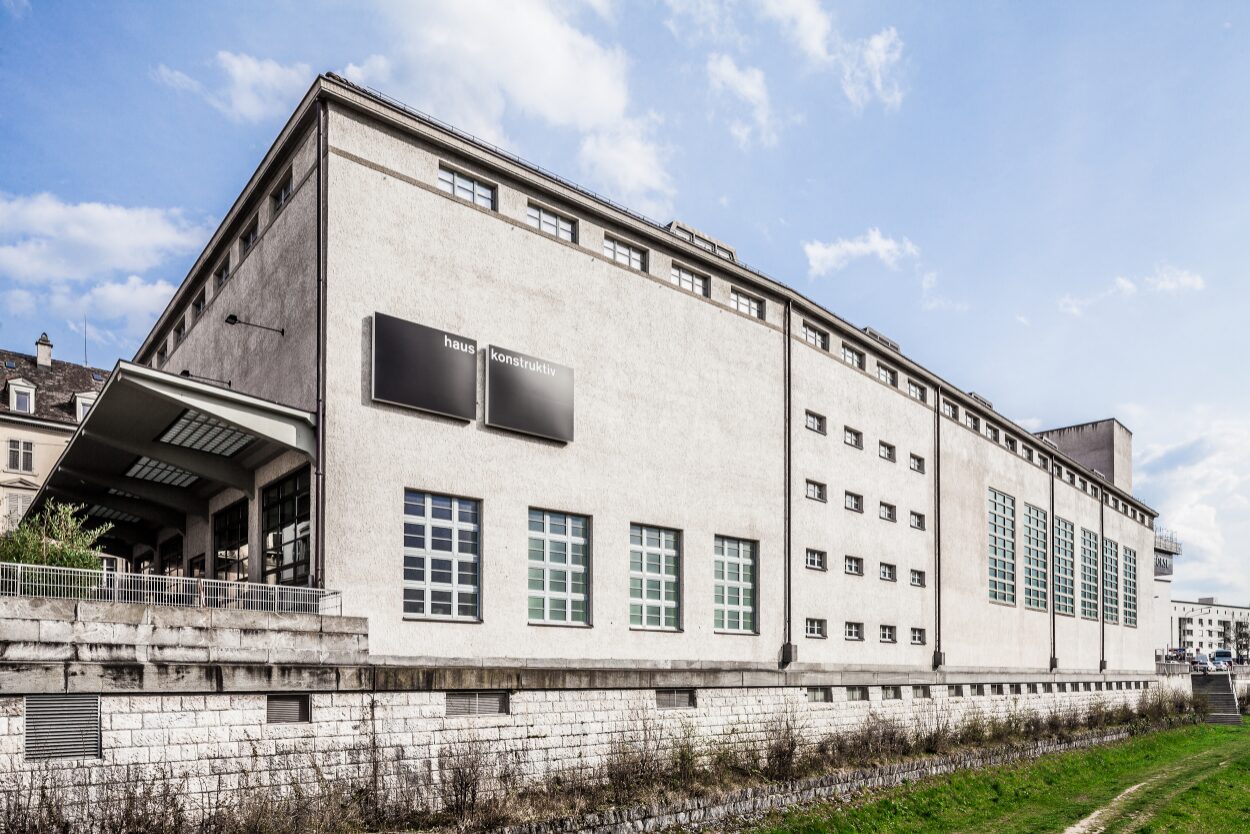About
Museum Haus Konstruktiv is the leading institution for constructivist-concrete, and conceptual art in Switzerland, and is highly regarded internationally. This art form, characterized by the accomplishments of the Zurich Concretists surrounding Max Bill, Richard Paul Lohse, Camille Graeser, and Verena Loewensberg from the 1930s to 1950s, is now so essential to the landscape of modernism, that it is no longer possible to imagine this landscape without it. We have made it our task to keep this art-historical heritage alive and to link it to contemporary art. One of our objectives is to demonstrate the interfaces that connect the legacy of constructivist-concrete art with the international art scene – and the past with the present.
Six to nine temporary exhibitions a year, consistently conceived according to clear programmatic perspectives, make Museum Haus Konstruktiv unique within the cultural landscape. Oriented toward demonstrating the links that connect the pioneers of constructivist-concrete and conceptual art with international contemporary art, these exhibitions bring renowned positions, new positions, and rediscovered historical positions into a dialog with contemporary artists’ approaches today.
We have made it our task to keep this art-historical heritage alive and to link it to contemporary art. Our exhibitions are essentially about the continuation of this legacy into the present and, at the same time, about how contemporary art concepts are reflected in historical predecessors. This dialog usually takes place in two to three parallel solo or group exhibitions, in which the intellectual or formal connections and differences between generations of artists become evident.
The art-historical background comprises Russian constructivism and the constructivist-concrete stimuli of 1920s and 1930s Western Europe, including the Bauhaus, but also kinetic art, op art and 1960s American minimal art, as well as 1960s conceptual art, which arose from the tendency toward reduction that all of the above have in common.

In spring 2001, Museum Haus Konstruktiv moved from the Seefeld district to the city center of Zurich.
The historically unique ewz-Unterwerk Selnau building, which served as a substation for around a hundred years, providing the city with electricity until it was shut down in 1998, is the ideal place for our museum. Remodeled between 1930 and 1934 by renowned architect Hermann Herter, who was the City Architect at the time, this structure is now a protected historic monument.
It is one of the most impressive examples of New Objectivity and among the most attractive pieces of industrial architecture in the heart of Zurich.
Converted according to plans by the architects Roger Diener of Basel and Meier + Steinauer of Zurich, it now presents itself as a modern museum, lent a certain charm by its past as an industrial building. Five floors and 1,200 square meters of exhibition space provide room for spectacular art presentations.
From the foyer in the entrance area there is an uninterrupted view of the old crane site, the shop and the café. The exhibition rooms can be reached via the central staircase. The attic, with its open steel construction, houses one of the most beautiful libraries in the city and the art education atelier.
The "Kultur inklusiv" label is awarded to cultural institutions of all sectors by the Kultur inklusiv office of Pro Infirmis. The label partners promote inclusion with their measures in the five fields of action "cultural offer", "content access", "structural access", "work offers" and "communication" and are committed to the long-term and holistic cultural participation of people with disabilities.
The Museum Haus Konstruktiv bears the label since fall 2019.
Museum Haus Konstruktiv is committed to sustainability and strives to do as much as it can to help tackle the climate crisis effectively. It conveys this commitment to its staff, as well as to its partners and visitors. In doing so, it follows the guidelines set out in the position paper by the Association of Swiss Art Museums (VSK) and the Happy Museums network.
Building / Preservation
Museum Haus Konstruktiv is only partially air-conditioned and uses green electricity. Wherever possible, it works with regional tradespeople and uses eco-friendly materials for maintenance.
Exhibitions / Collection
Museum Haus Konstruktiv regularly includes artists from Switzerland and Zurich in its program. Here too, we work with regional suppliers and ensure that materials are used in resource-saving ways.
If possible, we arrange combined transportation and seek short transport routes. Sustainability always has high priority in our collaborations with artists.
Management / Café & Shop
Museum Haus Konstruktiv raises its staff’s awareness with regular continuing education and training on the subject of sustainability.
The use of environmentally friendly materials and cooperation with local partners for the administration, café and shop are a matter of course for us.
Museum Haus Konstruktiv is supported by its patrons, members and
